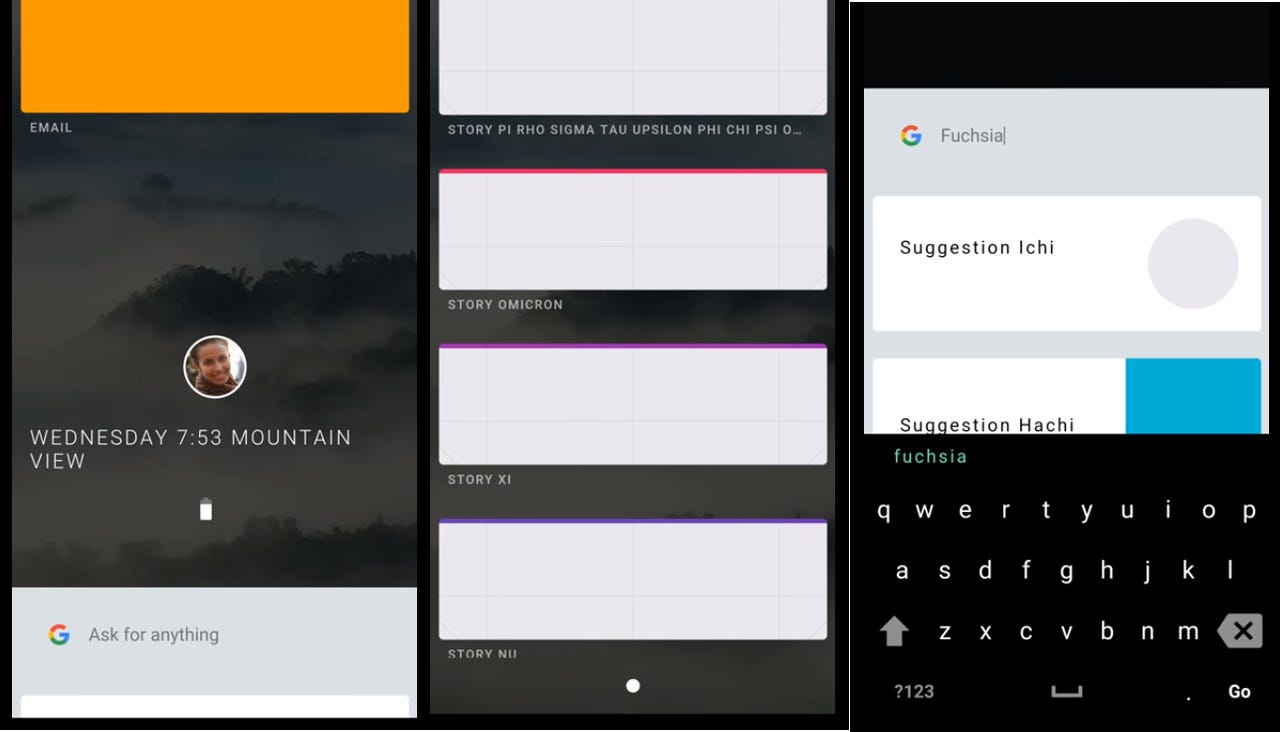Google's no-Linux Fuchsia: Now you can see what the new OS looks like


The Armadillo Android app shows some features in common with Android but also reveals a new take on how apps are organized.
Google's third operating system, Fuchsia, now has a system interface that offers a peek into what the OS might look like.
Differing from Android and Chrome OS, Fuchsia eschews the Linux kernel for Google's very own Magenta micro-kernel. The new OS surfaced in August and with Google yet to explain what its plans are for it, some have speculated Fuchsia is its effort to unify Android and Chrome.
While Google hasn't named a purpose for Fuchsia, it also hasn't been hiding its progress, which can be viewed on the Fuchsia GitHub page where it recently added a Fuchsia system user interface called Armadillo.
According to the page, Armadillo is an app that was written in Flutter, Google's tool for building apps for iOS and Android from a single code base.
Developers at hotfixit.net have used the available source code to demonstrate how Fuchsia Armadillo behaves running as an Android app. App developers keen to build a Fuchsia Armadillo app can follow Hotfixit's instructions or just download the APK file, which should be available on Dropbox, but isn't due to heavy traffic.
Hotfixit.net has also posted a video of the Armadillo Android app, which shows some features in common with Android but also reveals a new take on how apps are organized.
Hotfix's video runs through the features of the Armadillo Android app.
Image: Hotfix
Instead of static apps, Armadillo offers a card-centric interface that users can scroll downwards through to view Armadillo stories, which are a "set of apps and/or modules that work together for the user to achieve a goal".
Armadillo is organized by a group of key co-dependent widgets that orchestrate the experience as the user moves between different contexts. It also introduces the concept of a "suggestion", or a "representation of an action the user can take to augment an existing story or to start a new one".
The user profile page features an image of the user, the date and time, location, and battery level. There's also a shortcut to settings, with volume and light settings, airplane mode, and other settings similar to Android's Quick Settings.
As Ars Technica notes, long-pressing a card allows the user to drag and drop it on to another app, which launches split-screen mode. The UI also has its own Fuchsia keyboard.
While a timeline for Fuchsia remains unclear, the OS would be an entirely Google-built product free of Android's dependencies on Linux and the legal problems Java has presented Google.